Antoine-Georges-Prosper Marilhat (1811-1847)
Get a Marilhat Certificate of Authenticity for your painting (COA) for your Marilhat drawing.
For all your Marilhat artworks you need a Certificate of Authenticity (COA) in order to sell, to insure or to donate for a tax deduction.
Getting a Marilhat Certificate of Authenticity (COA) is easy. Just send us photos and dimensions and tell us what you know about the origin or history of your Marilhat painting or drawing.
If you want to sell your Marilhat painting or drawing use our selling services. We offer Marilhat selling help, selling advice, private treaty sales and full brokerage.
We have been authenticating Marilhat and issuing certificates of authenticity since 2002. We are recognized Marilhat experts and Marilhat certified appraisers. We issue COAs and appraisals for all Marilhat artworks.
Our Marilhat paintings and drawings authentications are accepted and respected worldwide.
Each COA is backed by in-depth research and analysis authentication reports.
The Marilhat certificates of authenticity we issue are based on solid, reliable and fully referenced art investigations, authentication research, analytical work and forensic studies.
We are available to examine your Marilhat painting or drawing anywhere in the world.
You will generally receive your certificates of authenticity and authentication report within two weeks. Some complicated cases with difficult to research Marilhat paintings or drawings take longer.
Our clients include Marilhat collectors, investors, tax authorities, insurance adjusters, appraisers, valuers, auctioneers, Federal agencies and many law firms.
We perform Antoine-Georges-Prosper Marilhat art authentication, appraisal, certificates of authenticity (COA), analysis, research, scientific tests, full art authentications. We will help you sell your Antoine-Georges-Prosper Marilhat or we will sell it for you.
Antoine-George-Prosper Marilhat was a great Orientalist painter, who sadly died at a very young age. He was born in Vertaizon, in the Auvergne region of France. He started painting early on in his life, producing landscapes of the Auvergne. He then moved to Paris to study under the painter Camille Roqueplan, who was a painter of landscapes, historical subjects, and genre scenes. Marilhat made his debut in the salon in 1831, with a landscape of the Auvergne.
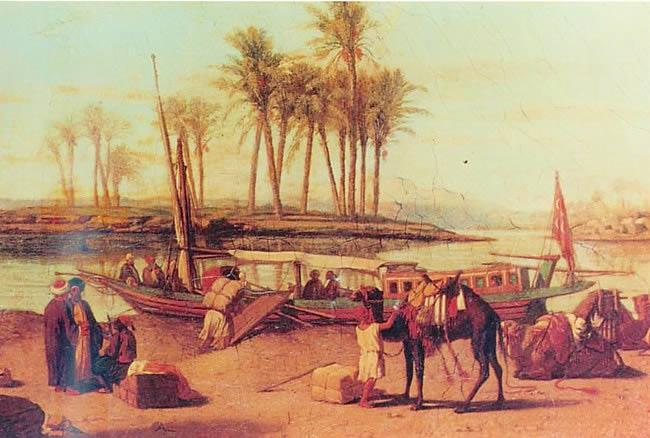
In 1831, he joined Baron Karl von Hugel on an expedition to Greece, Syria, Lebanon, Palestine and Egypt. Baron Karl von Hugel then went on to India, while Marilhat stayed in the Orient for a further twenty two months. During this lengthy period, he produced ten albums of sketches, and drawings. This provided inspiration for his work for the rest of his life. Marilhat mainly specialized in architectural paintings and landscapes. However, he also produced some portraits, including one of Theodore Chasseriau, who was his friend, and also an Orientalist painter. This painting now hangs in the Louvre. He also worked on two decorative schemes for the theatre in Alexandria.
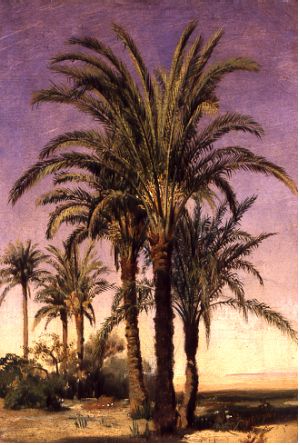
From the years, 1840 to 1844, Marilhat drew heavily from his experience in the 0rient, particularly his time in Egypt. In 1840, he produced the painting, “Ruins of the al-Hakim Mosque, Cairo.” This mosque lay inside the north wall of Cairo, between two great gates. Although it was very dilapidated, and almost completely abandoned by the nineteenth century, it continued to attract artists, and writers. Art critics have said of this painting, which was exhibited in the Salon of 1840, that it captured the monumentality of the ruins, and the romanticism of the location.
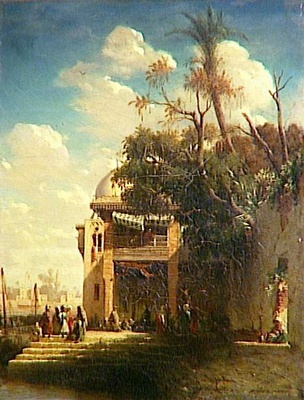
Theophile Gautier was deeply moved by Marilhat’s Oriental paintings, and particularly the painting entitled, “Place de l’Esbekieh au Caire”. When he saw this painting, he reacted in a very emotional manner, and said, “On seeing this painting, I became sick at heart, and yearned for the Orient, in which I had not yet set foot.”
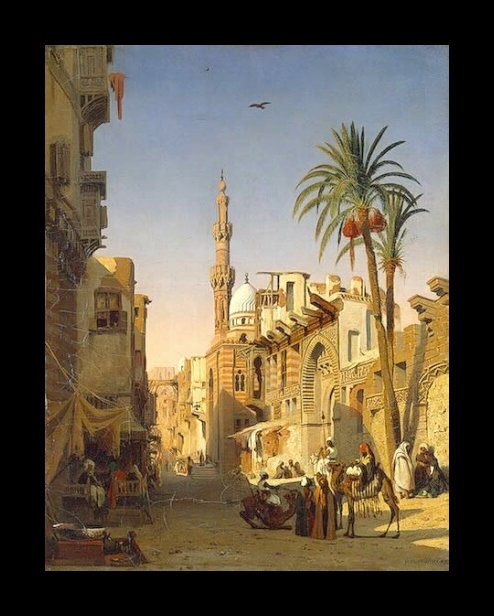
Marilhat won a lot of praise at the Salon of 1844, with the painting, “Souvenirs abord du Nil”, and also, “Arabes syriens en Voyage”, which now hangs in the Musee Conde, in Chantilly.
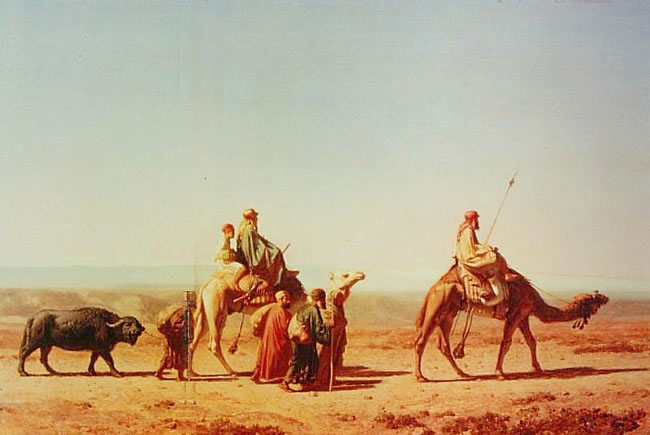
While working on his Orientalist work, he continued to exhibit landscapes of Provence, and his native Auvergne. Art critics have said that his work can be divided into three stylistic periods. The first is his traditional landscapes, and portraits. The second was the elegant draughtsmanship of his Oriental period, and the third came after 1838. This third period was said to have been influenced by Cabat, and his friend, d’Augny, when he produced a number of mythological works. His last paintings were not very well received by the critics. It is certain that he had the greatest success with his Oriental works, for which he received much praise.
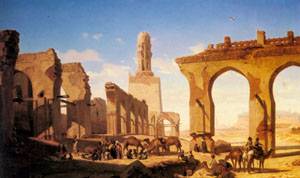
Marilhat sadly became insane towards the end of his life and ended his days in an asylum. His Oriental works can be found in the Louvre, the Wallace Collection in London, as well as the Hermitage Museum in St. Petersburg.
